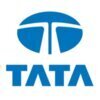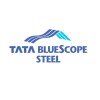Filter interviews by
ArcelorMittal Interview Questions and Answers for Experienced
16 Interview questions
DDL, DML, and DQL are SQL categories for defining, manipulating, and querying data in databases.
DDL (Data Definition Language) is used to define database structures. Example: CREATE TABLE, ALTER TABLE.
DML (Data Manipulation Language) is used for managing data within schema objects. Example: INSERT, UPDATE, DELETE.
DQL (Data Query Language) is used to query and retrieve data. Example: SELECT.
Procedures perform actions without returning values; functions return values and can be used in expressions.
Procedures are called for their side effects, e.g., updating a database.
Functions return a value and can be used in expressions, e.g., calculating a sum.
Procedures do not have a return type, while functions must specify one.
Example of a procedure: 'UPDATE Employee SET Salary = Salary * 1.1'.
Example of a func...
PL/SQL code blocks consist of declarations, executable commands, and exception handling for structured programming in Oracle databases.
Declaration Section: This is where variables, constants, and cursors are declared. Example: 'DECLARE v_employee_name VARCHAR2(100);'
Executable Section: This part contains the actual code that performs operations. Example: 'BEGIN SELECT name INTO v_employee_name FROM employees WHERE...
We followed strict safety protocols including regular safety inspections, providing proper PPE, conducting safety training sessions, and implementing emergency response plans.
Regular safety inspections were conducted to identify and address potential hazards
Proper personal protective equipment (PPE) was provided to all employees
Safety training sessions were held to educate employees on safe work practices
Emergency...
I manage warehouse operations by overseeing inventory, coordinating shipments, optimizing layout, and ensuring safety protocols.
Oversee inventory levels to prevent stockouts and overstocking
Coordinate shipments to ensure timely delivery and minimize delays
Optimize warehouse layout for efficient storage and retrieval
Enforce safety protocols to prevent accidents and ensure compliance with regulations
Arcelormittal Nippon Steel is a joint venture between Arcelormittal and Nippon Steel, formed to create a leading steel company.
The joint venture combines the strengths of both companies in terms of technology, expertise, and market reach.
It allows for greater efficiency and cost savings through shared resources and operations.
The partnership also enables the company to better serve customers globally with a wider ...
Preventive maintenance is planned maintenance to prevent breakdowns, while breakdown maintenance is repairing equipment after it has failed.
Preventive maintenance is scheduled and proactive
Breakdown maintenance is reactive and occurs after equipment failure
Preventive maintenance reduces downtime and increases equipment lifespan
Breakdown maintenance can be costly and cause production delays
Examples of preventive ma...
Recording delays involves documenting the cause, duration, and impact of the delay.
Identify the cause of the delay, such as equipment failure or resource unavailability.
Record the duration of the delay, including start and end times.
Document the impact of the delay on the project timeline, budget, and resources.
Use a standardized format or template to ensure consistency in recording delays.
Include any relevant sup...
Clashing refers to conflicts or clashes between different elements or parties.
Clashing occurs when there is a disagreement or collision between two or more entities.
It can happen in various contexts such as project management, team dynamics, or resource allocation.
Examples of clashing include conflicting priorities, incompatible schedules, or disagreements on project scope.
Clashing can lead to delays, inefficienci...
Project management is the practice of planning, organizing, and executing projects to achieve specific goals within a defined timeframe.
Project management involves defining project objectives, creating a project plan, and allocating resources.
It includes coordinating and communicating with team members, stakeholders, and clients.
Project managers monitor progress, manage risks, and make adjustments to ensure succes...
ArcelorMittal Interview Experiences for Experienced
23 interviews found
(2 Questions)
- Q1. Can you tell me about yourself?
- Ans.
I am a dedicated and experienced professional with a strong background in leadership and management.
Over 10 years of experience in supervisory roles
Proven track record of successfully leading teams to achieve goals
Strong communication and problem-solving skills
Bachelor's degree in Business Administration
Previous experience in handling budgets and resources effectively
- Q2. What achievements have you accomplished?
- Ans.
I have successfully led a team to increase productivity by 20% and reduce costs by 15% in my previous role as a Section Incharge.
Led a team to increase productivity by 20%
Reduced costs by 15%
Implemented new strategies to streamline processes
Received recognition for outstanding performance
(1 Question)
- Q1. What are your roles and responsibilities?
- Ans.
As a Section Incharge, my roles and responsibilities include overseeing the daily operations of a specific department or section, managing staff, ensuring compliance with regulations, and implementing strategies to improve efficiency.
Overseeing the daily operations of the assigned section
Managing and supervising staff members
Ensuring compliance with regulations and company policies
Implementing strategies to improve eff...
I applied via LinkedIn and was interviewed in May 2024. There were 2 interview rounds.
(2 Questions)
- Q1. Brief Description
- Ans.
Explain the importance of conducting safety audits in a workplace.
Safety audits help identify potential hazards and risks in the workplace.
They ensure compliance with safety regulations and standards.
Audits can lead to improvements in safety procedures and practices.
Regular audits can prevent accidents and injuries.
Audits provide a way to measure the effectiveness of safety programs.
Examples: conducting a fire safety a...
- Q2. Salary Negotiation
(2 Questions)
- Q1. About core competency
- Q2. Previous company achievements
Interview Preparation Tips
(2 Questions)
- Q1. Daily work routine
- Q2. Improvement projects done
Interview Preparation Tips
I applied via Naukri.com and was interviewed in Nov 2023. There were 3 interview rounds.
(1 Question)
- Q1. How do you manage warehouse operations.
- Ans.
I manage warehouse operations by overseeing inventory, coordinating shipments, optimizing layout, and ensuring safety protocols.
Oversee inventory levels to prevent stockouts and overstocking
Coordinate shipments to ensure timely delivery and minimize delays
Optimize warehouse layout for efficient storage and retrieval
Enforce safety protocols to prevent accidents and ensure compliance with regulations
(1 Question)
- Q1. What is the strength of the team you handled?
(1 Question)
- Q1. What safety measures you were following?
- Ans.
We followed strict safety protocols including regular safety inspections, providing proper PPE, conducting safety training sessions, and implementing emergency response plans.
Regular safety inspections were conducted to identify and address potential hazards
Proper personal protective equipment (PPE) was provided to all employees
Safety training sessions were held to educate employees on safe work practices
Emergency resp...
I applied via Approached by Company and was interviewed in Oct 2023. There were 3 interview rounds.
General discussion about my job
(1 Question)
- Q1. In detail knowledge about my job
(1 Question)
- Q1. Why choose this company
- Ans.
I chose this company for its innovative approach, strong values, and commitment to employee growth and community impact.
The company's reputation for innovation aligns with my passion for creative problem-solving, as seen in their recent product launch.
I admire the company's commitment to sustainability, demonstrated by their initiatives to reduce carbon footprint and promote eco-friendly practices.
The emphasis on emplo...

(2 Questions)
- Q1. They asked questions keeping resume in front. Also most of questions were experience and equipments we worked with its technical details, maintenance schedule, problems faced, modification done.
- Q2. All about compressor make , technical details and problem faced. All about pumps, cooling tower and gas lines and procurement procedure of pumps and all utility equipments All about softener.
Interview Preparation Tips
I appeared for an interview before Apr 2024, where I was asked the following questions.
- Q1. What is the difference between procedures and functions?
- Ans.
Procedures perform actions without returning values; functions return values and can be used in expressions.
Procedures are called for their side effects, e.g., updating a database.
Functions return a value and can be used in expressions, e.g., calculating a sum.
Procedures do not have a return type, while functions must specify one.
Example of a procedure: 'UPDATE Employee SET Salary = Salary * 1.1'.
Example of a function:...
- Q2. What are the differences between DDL, DML, and DQL in database management?
- Ans.
DDL, DML, and DQL are SQL categories for defining, manipulating, and querying data in databases.
DDL (Data Definition Language) is used to define database structures. Example: CREATE TABLE, ALTER TABLE.
DML (Data Manipulation Language) is used for managing data within schema objects. Example: INSERT, UPDATE, DELETE.
DQL (Data Query Language) is used to query and retrieve data. Example: SELECT.
- Q3. What are the different parts of PL/SQL code blocks?
- Ans.
PL/SQL code blocks consist of declarations, executable commands, and exception handling for structured programming in Oracle databases.
Declaration Section: This is where variables, constants, and cursors are declared. Example: 'DECLARE v_employee_name VARCHAR2(100);'
Executable Section: This part contains the actual code that performs operations. Example: 'BEGIN SELECT name INTO v_employee_name FROM employees WHERE id =...
Interview Preparation Tips
(1 Question)
- Q1. Education back ground, previous work experience.
(1 Question)
- Q1. Technical related questions
I appeared for an interview before Mar 2024, where I was asked the following questions.
- Q1. Tell me about your self.
- Q2. How did you handle any major breakdown?
I applied via Approached by Company and was interviewed in Feb 2023. There were 2 interview rounds.

(2 Questions)
- Q1. Question in pneumatic actuator, FT, PT & DPT ?
- Q2. Question on sequence of Hot blast stove and BLT
Interview Preparation Tips
Top trending discussions






ArcelorMittal Interview FAQs
The duration of ArcelorMittal interview process can vary, but typically it takes about less than 2 weeks to complete.
Tell us how to improve this page.
ArcelorMittal Interviews By Designations
- ArcelorMittal Manager Interview Questions
- ArcelorMittal Assistant Manager Interview Questions
- ArcelorMittal Junior Engineer Civil Interview Questions
- ArcelorMittal Deputy Manager Interview Questions
- ArcelorMittal Executive Manager Interview Questions
- ArcelorMittal Project Manager Interview Questions
- ArcelorMittal Logistics Executive Interview Questions
- ArcelorMittal Field Engineer Interview Questions
- Show more
Interview Questions for Popular Designations
Overall Interview Experience Rating
based on 12 interview experiences
Difficulty level
Duration
Interview Questions from Similar Companies
ArcelorMittal Reviews and Ratings
based on 468 reviews
Rating in categories
|
Deputy Manager
135
salaries
| ₹9.4 L/yr - ₹16 L/yr |
|
Manager
124
salaries
| ₹13.5 L/yr - ₹25 L/yr |
|
Assistant Manager
109
salaries
| ₹5.5 L/yr - ₹12 L/yr |
|
Assistant Field Engineer
60
salaries
| ₹2 L/yr - ₹4.3 L/yr |
|
Senior Manager
52
salaries
| ₹16.8 L/yr - ₹30 L/yr |

Tata Steel

Tata Steel Downstream Products

Tata BlueScope Steel

Arjas Steel
- Home >
- Interviews >
- ArcelorMittal Interview Questions >
- ArcelorMittal Interview Questions for Experienced













